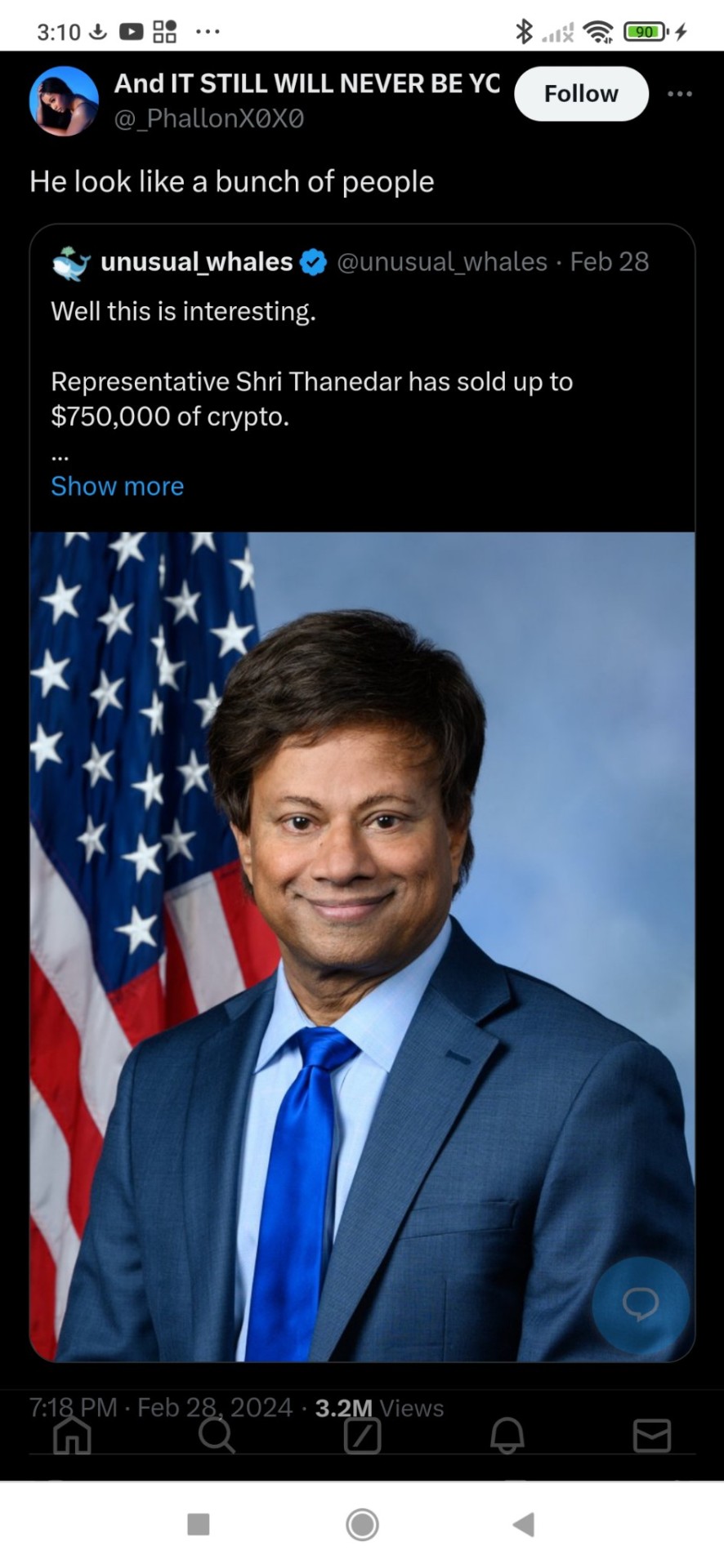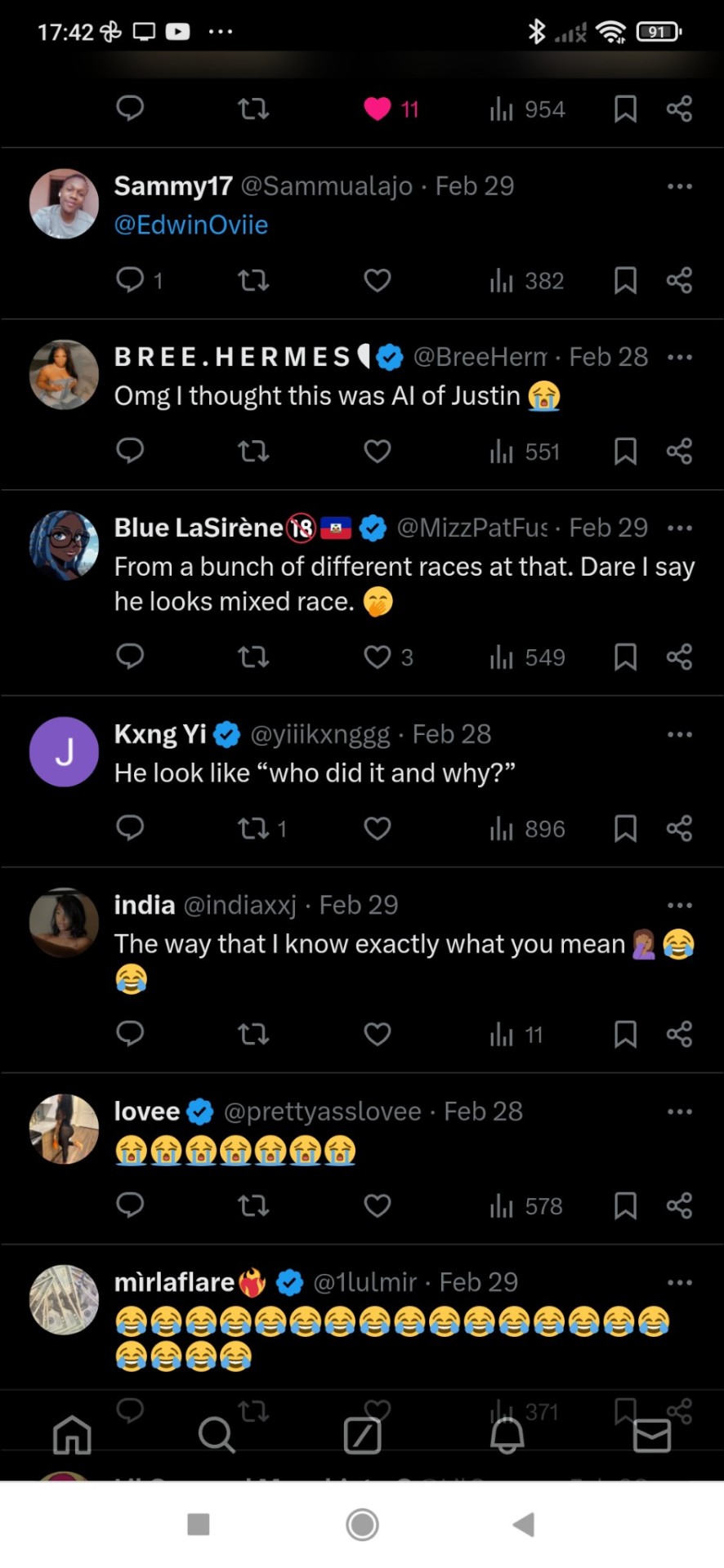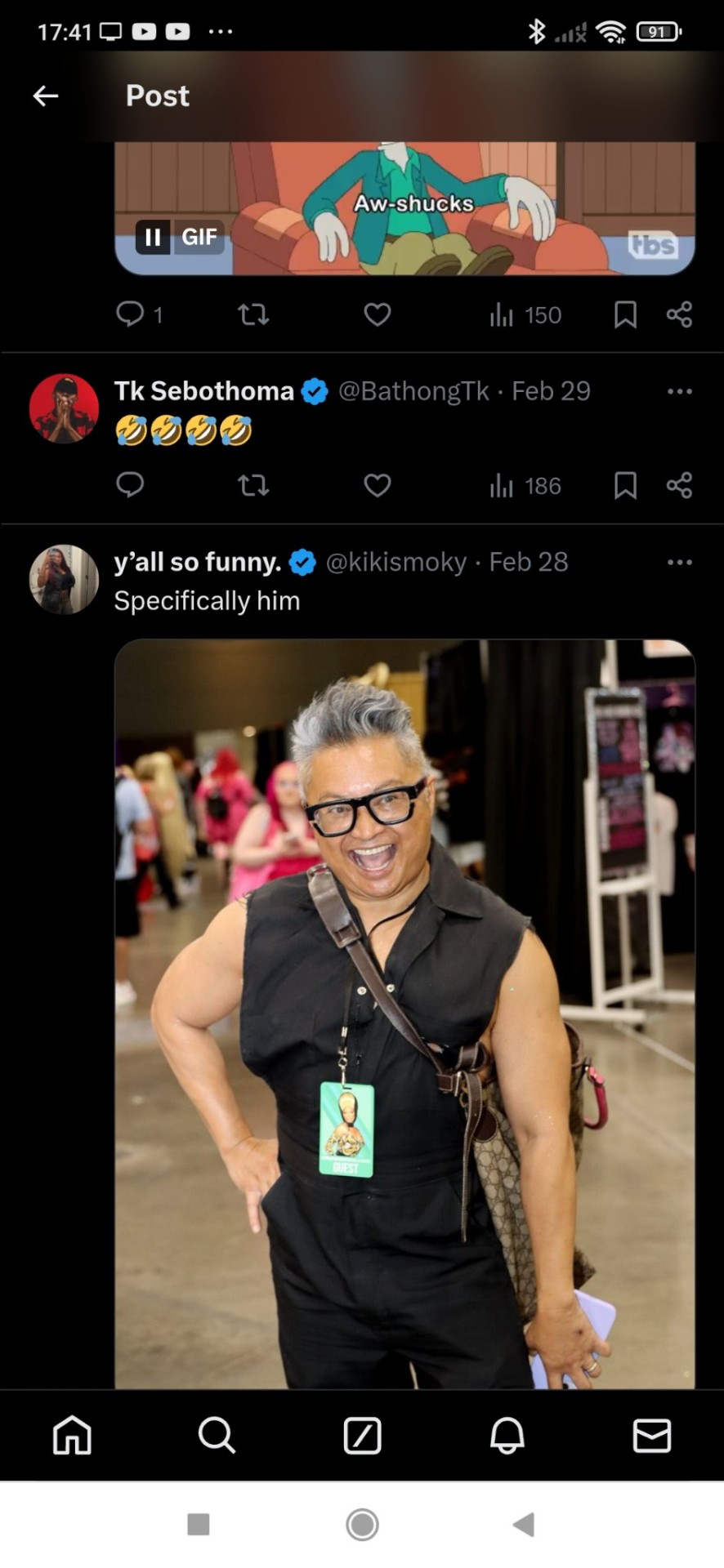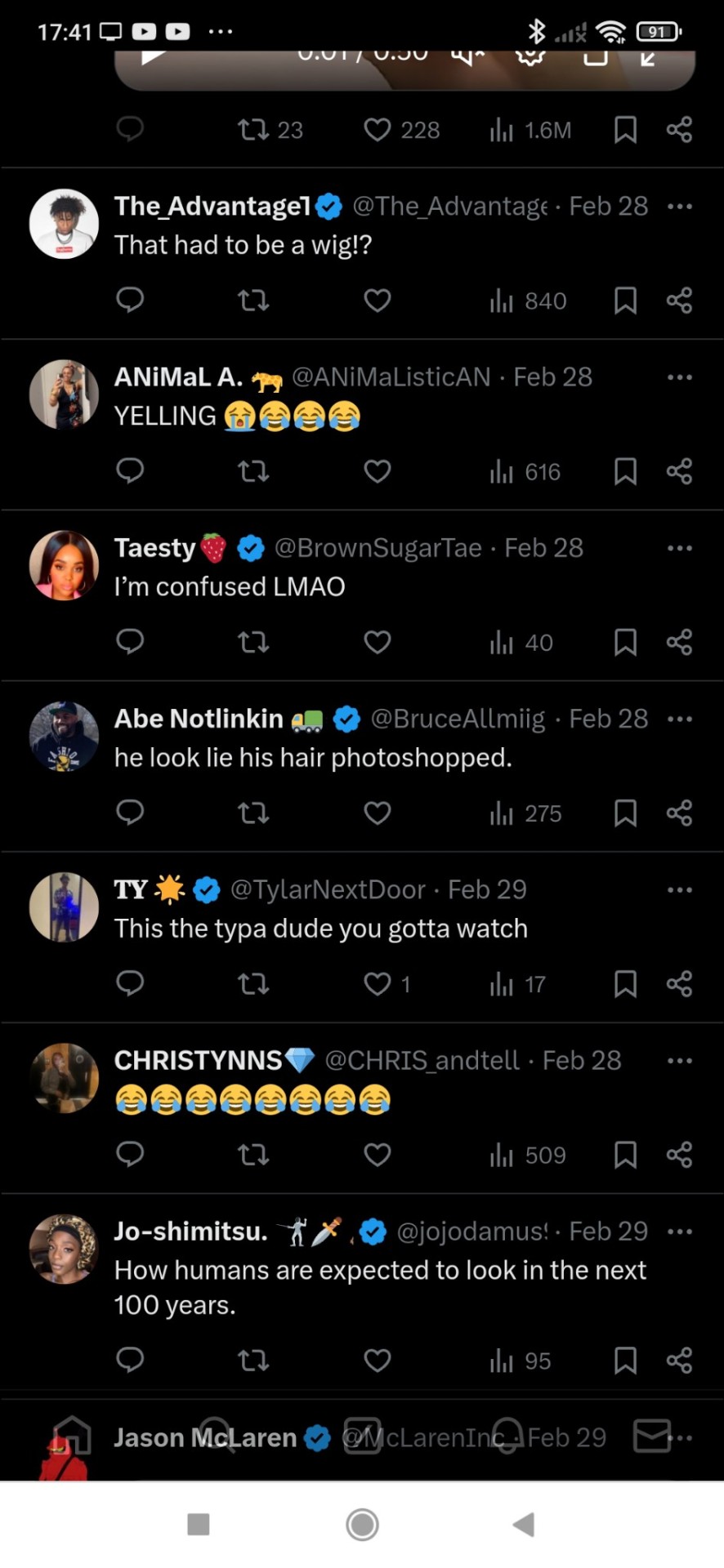#phenotypes
Photo
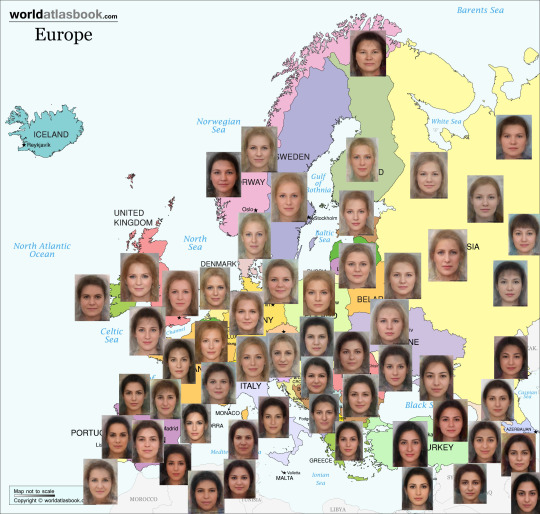
Female phenotypes across Europe and surrounding areas.
697 notes
·
View notes
Text
Dynamic Genetics
You guys!
After literally thinking about this for so long I finally figured out how dynamic genetics work in my AU.
Alpha Genotypes: AA, AB
Beta Genotypes: BB, AO
Omega Genotypes: OO, OB
-------------
lol you guys I made this in the middle in the night like six months ago and totally forgot about it. This is really good! Lol I was really onto something here.
#omegaverse#dynamics#a/b/o#omegaverse headcanons#finally figured it out#alpha beta omega#presenting#omegaversetheory#a/b/o au#omegaverse au#omegaverse dynamics#a/b/o dynamics#phenotypes#omegaverse genetics#punnet squares#omegaverse biology#thebasics
23 notes
·
View notes
Photo

Lucien Schnegg (French, 1864-1909)
Buste de Jane Poupelet, c.1900
Musée des beaux-arts de Bordeaux
#phenotype#art#Lucien Schnegg#french art#french#france#Jane Poupelet was a French sculptress#fine art#classical art#sculpture#western civilization#europe#europa#mediterranean#european#Jane Poupelet#phenotypes#french sculptor#female#woman
28 notes
·
View notes
Text
Expected Phenotypes Ex 1
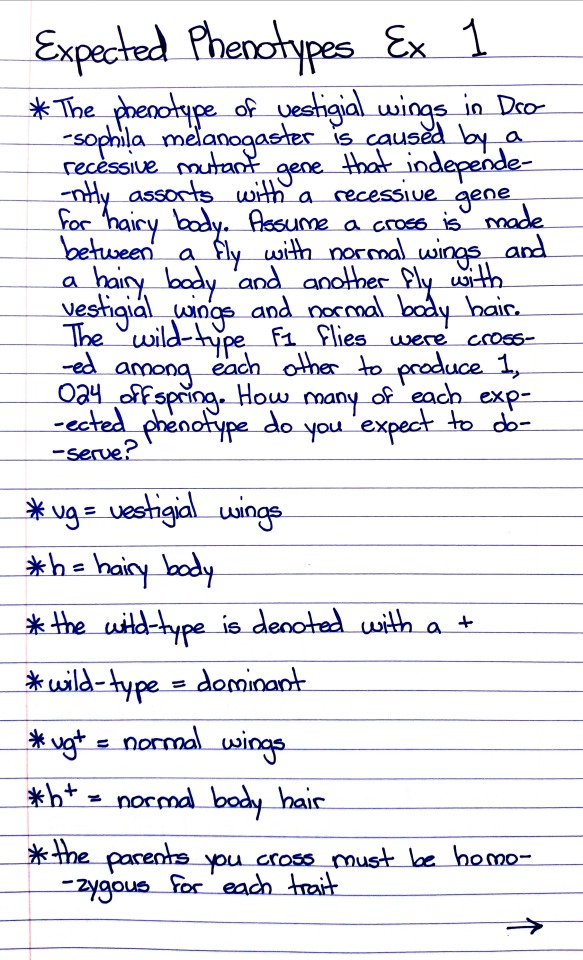
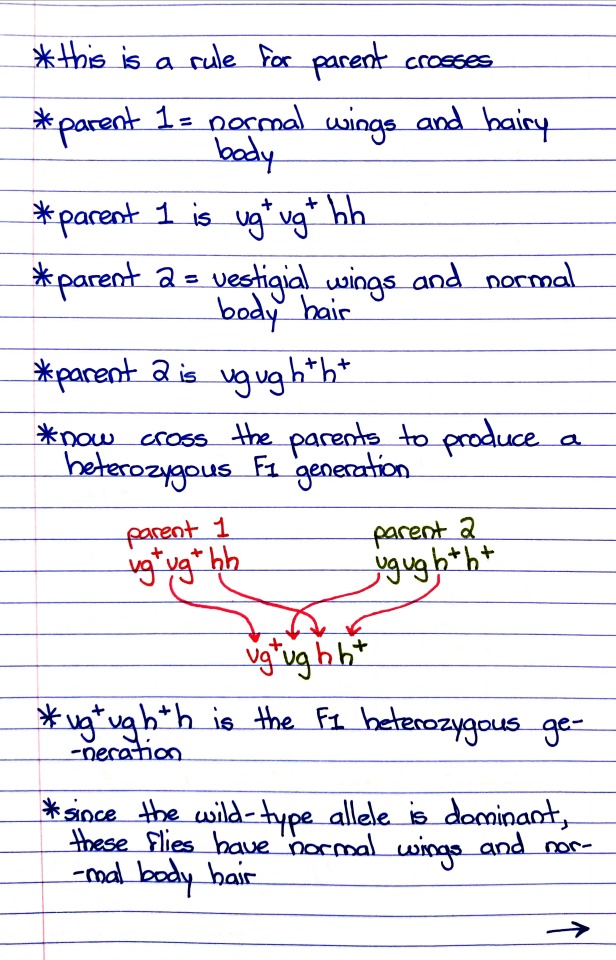
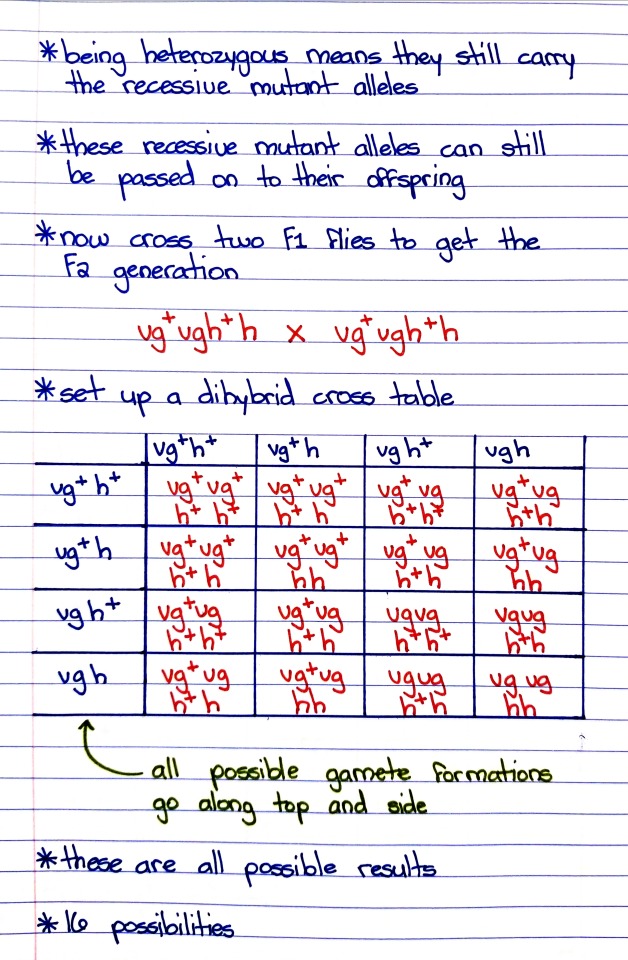

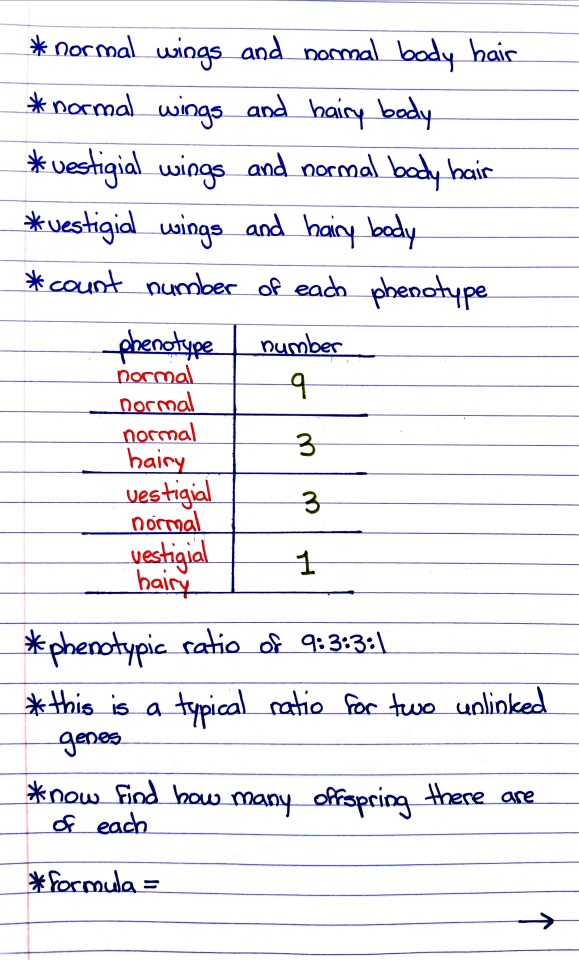
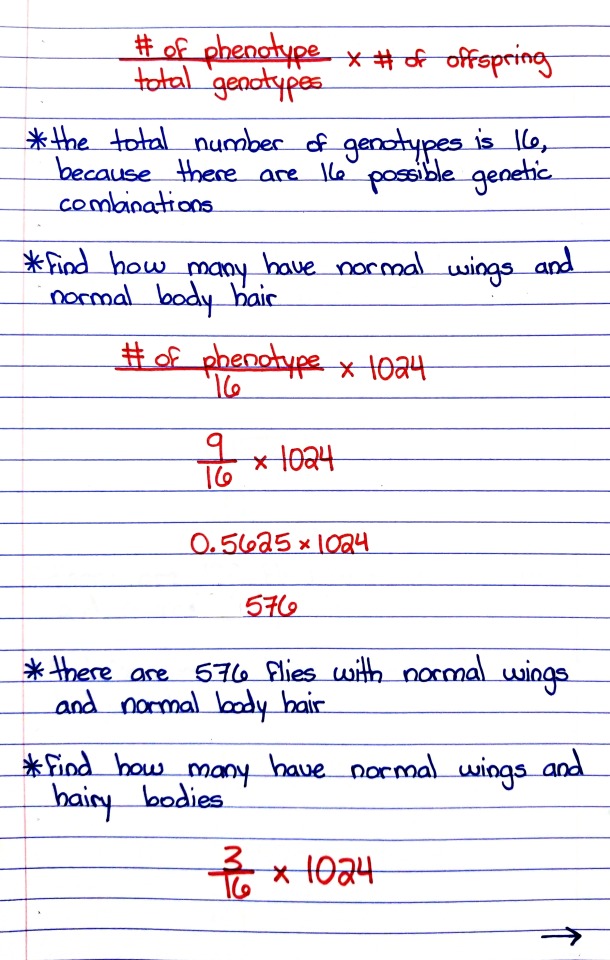
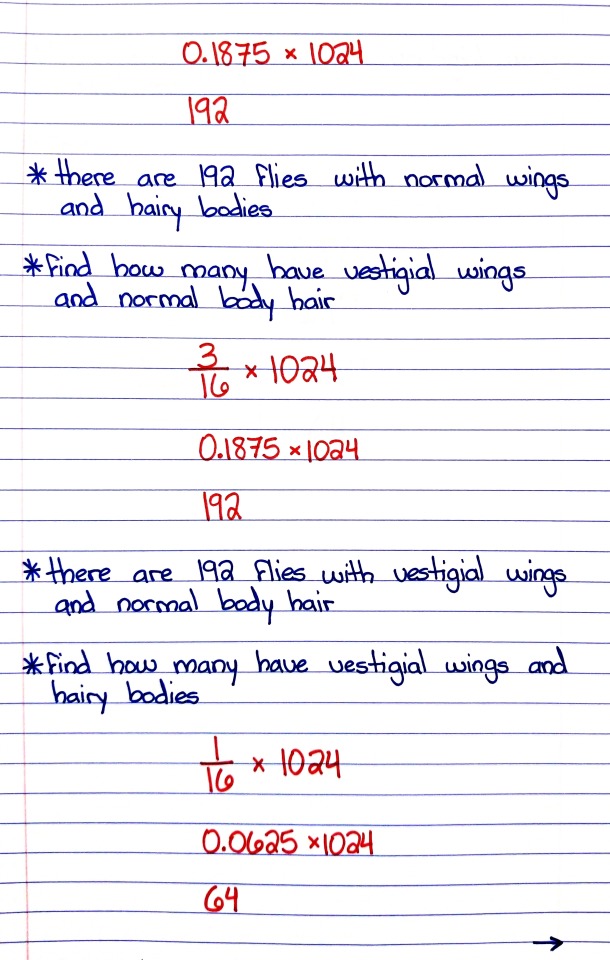
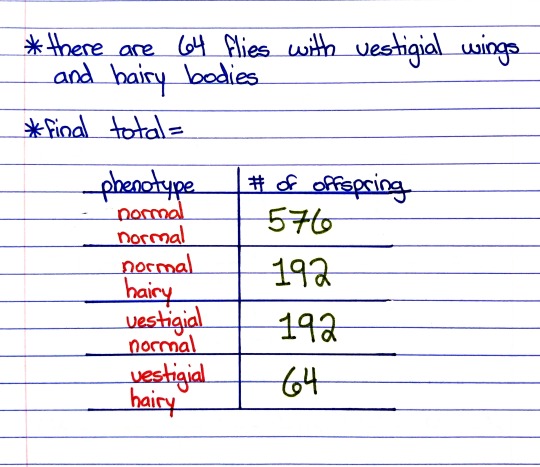
Patreon
#studyblr#notes#genetics#medblr#medical notes#med notes#genetics notes#genetics calculations#biology#bio#bio notes#biology notes#math#math in biology#biology math#math for life sciences#alleles#phenotypes#expected phenotypes#calculating phenotypes#phenotype calculations#genotypes#genes#genetics experiments#phenotype experiments
3 notes
·
View notes
Text




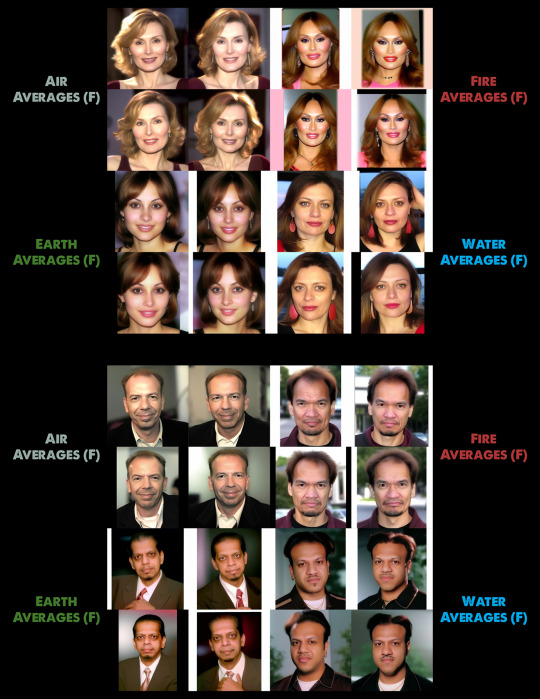
The Average Face of Each Zodiac Sign
The average faces for each zodiac sign calculated using Midjourney's AI to aggregate images of public figures of diverse ages with Sun/Moon/Rising and/or 3+ inner planet stelliums in each zodiac sign.
I attempted to assemble as much ethnic diversity as I could, though quality data is often lacking on people traditionally marginalized by Western history, so more work is needed on that front. Some images represent a "racial average" of 1 of each White, Black, Latinx, East Asian and West Asian appearing-averages, in efforts to make a universal standard.
Others are simply an average of the entire database.
Others are averaged by visual "types". For instance, Cancer stellium women with Gemini-Scorpio as a secondary influence seem more prone to appear in historic databases than any other sort of Cancer stellium, and are visually very identifiable. So much so that I created a category for this combination of signs amid "standard Cancer".
These averages are continually being updated as new data comes in. Each image references ~15-20 individuals whose natal chart uniquely reflects a stellium (3+ significant chart aspects) in the given sign. In most instances, gender is based on assigned sex at birth.
Referencing data gathered by friends at the Astrofaces Project and the user-submitted database at Astroseek.com, I've been able to check my averages of renowned public figures sourced in the Astrodatabank & Astrotheme databases to determine the accuracy/legitimacy of each visual average.
Notes:
You may not resemble your sun sign, because another sign may predominate your chart. Visit a site like Astro-charts.com to make a free chart & see which sign is most dominant in your chart. For maximum accuracy, you will need correct birth time & place in addition to birth date. Appearance seems to be most astrologically influenced by Sun sign, Rising sign (1st house / Ascendant), and Moon, but also by concentrations of the same sign in inner planets such as Mercury, Mars, Venus, Jupiter and Saturn. Outer celestial bodies like Uranus, Neptune & Pluto, which are said to have generational significance rather than individual significance in most cases, due to their very slow (years long) rotations around the sun.
#astrology#astrology chart#natal charts#zodiac faces#astro faces#astrology faces#phenotypes#phenotypes in astrology#faces of signs#zodiac signs visualized#portraits of each zodiac sign#zodiac portraits#midjourney ai#midjourney#facial averaging technology#esoteric research#offbeat research projects
10 notes
·
View notes
Text


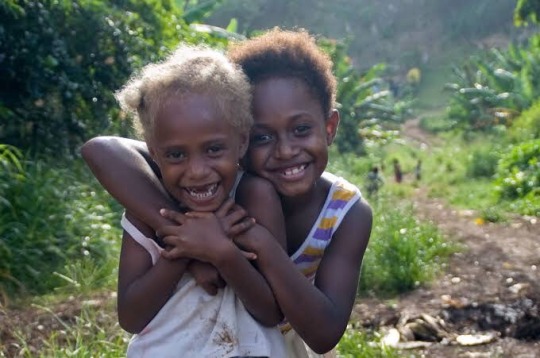

so pictured: the filipino aeta, Melanesian children and indigenous australians
they’re all different face types, theyre variants from the “out of africa” category which means they’re an ethnicity that evolved past african roots but still managed to keep key features like their dark skin and afro textured hair
at least for the melanesians it seems that they have the least amount of resemblance towards today’s african populations, tho while they carry similar features (though its guaranteed as a sometimes thing) they are not at all closely related to their african roots anymore, and have evolved from the paleolithic and neolithic era
this is what the humanphenotypes site says about them:
Medium brown to black skin, tight-curly hair, robust features, often with supraorbital arches, wide, relatively high noses and full lips, the height is variable, the limbs are long. Although features sometimes appear Sub-Saharan African, no close relationship exists, and they result from convergent evolution. Besides the Insular Melanesid proper, a more gracile, long-nosed Neo Melanesid variety is found among Papuans. Mountain Melanesids show very robust features, Tapirids are among the shortest people of the world. In the Western Solomon Islands, a very dark Bukaid variety exists. A very ancient, Australoid variety is the Paleo Melanesid.
for indigenous australians, they in particular are apparently carrying genetics from the south asian vedid (as according to the site they “migrated to australia in a south asian route”) and you can see the resemblance when you put the vedid face type together with the australid face type. in fact i would go as far as to say they have the least resemblance towards their african ancestors, though while im not sure how much time has passed during their stay in south asia its definitely evident that they carry a resemblance to their counterparts especially with only wavy to curly hair and facial proportions
the site text:
Probably split off from one of the early Out-of-Africa migrations before the divergence of Europeans and East Asians. Migrated to Australia via a South Asian route. Often shows a variety of ancient features. Superciliary arches strong, prognathy, long skulls, receding chin and foreheads. Long-legged, slender, skin medium brown to black, hair wavy to curly, noses very wide. Body hair stronger than in Sub-Saharan Africans. The North Australid variety is high-skulled, taller, darker, and more slender, the South Australid low-skulled, more thickset, and fairer-skinned. In the Western Desert exists a short-faced, lighter-haired Desert Australid variety. Until the 20th century a pygmoid Barrinean variety was found in the forests. The kinky-haired Tasmanid was native to Tasmania.
so finally we have the aetas, aka the negritos (little black ones— they literally resemble smaller africans hence the name) who bare the most resemblance towards their african roots. however, they also carry features from south asian genetics, which comes into play with the fact they immigrated through oceanic routes, meaning that they were islanders. this is what the site says about them
site text:
Very ancient South Asian type that probably arrived with an early Out-of-Africa migration via oceanic routes. Negritids are very short, males often below 150 cm, and have dark brown to black skin, kinky hair, and relatively short skulls. In difference to African Pygmies, Negritids show adultiform proportions, e.g. no abnormally short legs. Facial features are usually more gracile, noses not very wide. Was pushed back by later migrations of Veddids and Mongoloids, and survives only in small numbers scattered across several remote locations. Until 1857, the Andamanids (North Andamanid, South Andamanid) lived extremely isolated. After contact, populations rapidly collapsed due to disease. In the Philippines, an Aetid variety exists, in the Malayan peninsula a Semangid variety, both still survive in the rainforests. Deforestation, loss of culture, and disease could soon wipe out these unique people.
its actually really sad that many of their subvariants mentioned in the article are long gone due to colonization, racism and colorism, and i find it fucking abhorrent that it’s always been white people being the root of the problems they face. these are very unique groups of people and the fact their variants weren’t able to survive due to the circumstances, means that they’re also in even further danger if they aren’t protected.
to conclude, face types are super fascinating and should be something worth looking into especially when you talk about the history behind it. oceania and southeast asia hold super diverse ethnic groups and it’s not just limited to africans who have dark skin and curly hair.
#letra#genetics#phenotypes#human phenotypes#idk what to tag this as#biology#history#colonization#racism#education#mmm someone help me with the tags here </3#filipino#melanesian#solomon islands#australian#indigenous australians#aeta
18 notes
·
View notes
Text

obliteration!!
#idk why I drew mr smallbean’s face like that? channeling the preppy HS bully phenotype#hermitcraft season 10#hermitcraft#mcyt#mcyt fanart#grian#grian fanart#smallishbeans#smallishbeans fanart#roe.art
8K notes
·
View notes
Photo

Hello everyone and welcome to the start of the weekend - whoop!! These are five glorious paperbacks that I bought on an excellent catch-up and bookshop trip with @keeperofpages 😍 The Remainder is translated by Sophie Hughes and is set in Santiago, Chile. The city is covered in ash. Three children of ex-militants are facing a past they can neither remember or forget. Phenotypes is translated by Daniel Hahn and set in Brazil. It’s the story of two brothers, Federico and Lorenço, one of whom “passes” as white and has been able to avoid the worst of the racism Brazil has to offer. The author proves the old wound of race in Brazil, and in particular the loss of a black identity independent from the history of slavery. I’m still to read anything from Benjamin Myers but here is Beastings, whose cover screamed at me to buy it! This is an American Southern Gothic tale set against the violent beauty of Northern England, Beastings is a sparse and poetic novel about morality, motherhood and corruption. I’m hoping to read The Rooftop, translated by Annie McDermott with @keeperofpages It’s a claustrophobic novel about freedom, and also about fear, violence, motherhood and loss. Finally An Orphan World, translated by Juana Alcock and Sophie Hughes is a novel about poverty, and the resourceful ways in which people manage to confront it. At the same time it is a reflection about the body as a space of pleasure and violence. Perhaps above all else, it is a brutally honest love letter between a father and son. I’d love to know your thoughts on any of these books or authors. Also as a special treat, if you can tell me the odd book out (and why) in this haul, I’ll buy you a book from your wishlist 😜 First to answer wins! #bookstagram #scottishbookstagrammer #bookhaul #booksintranslation #readtranslatedbooks #beastings #benjaminmyers #phenotypes #pauloscott #danielhahn #theremainder #aliatrabuccozeran #sophiehughes #therooftop #fernandatrias #anorphanworld #anniemcdermott #juanaadcock #giuseppecaputo #readmoretranslations #readingtheworldonebookatatime https://www.instagram.com/p/Cja_-W9rhOo/?igshid=NGJjMDIxMWI=
#bookstagram#scottishbookstagrammer#bookhaul#booksintranslation#readtranslatedbooks#beastings#benjaminmyers#phenotypes#pauloscott#danielhahn#theremainder#aliatrabuccozeran#sophiehughes#therooftop#fernandatrias#anorphanworld#anniemcdermott#juanaadcock#giuseppecaputo#readmoretranslations#readingtheworldonebookatatime
1 note
·
View note
Photo
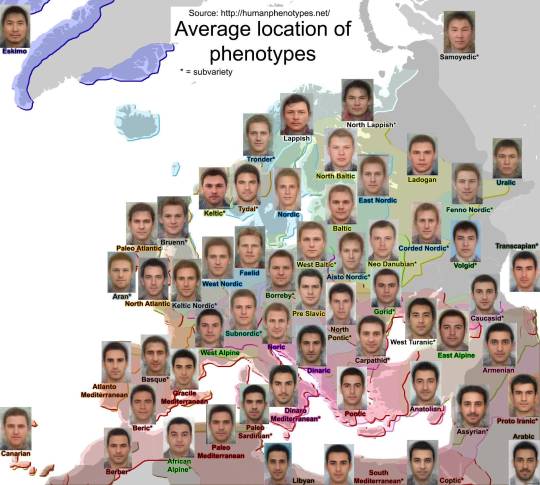
Male phenotypes across Europe and surrounding areas.
521 notes
·
View notes
Note
I'm loving your oc stuff too!!! Do you think we could get some (non spoilery) info about them?
Sure :] Cameron (right) is a barista living in her hometown with her younger sister she and is not thrilled about any of these things. Ari (left) writes articles about paranormal/hokey true crime stuff for a buzzfeed-knockoff type of website after quitting her phd. Theyre both mid-20s and also both gay but Cameron is very closeted
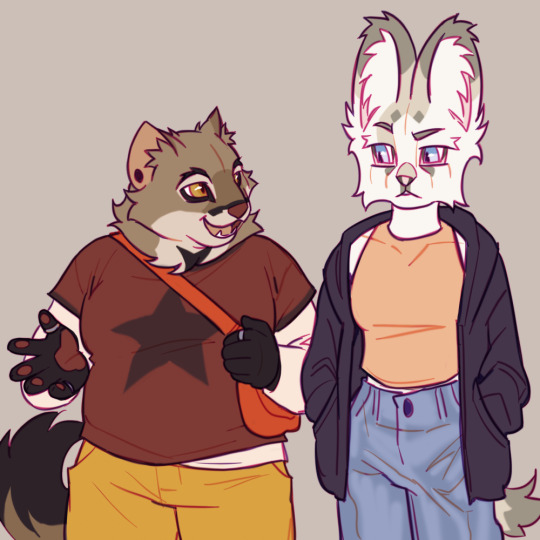
Ari's phd program was in vertebrate evolution, specifically feline phylogenetics, which segues into my worldbuilding that I've also wanted to talk about lol. All the characters in this world are based on cats from subfamily Felinae – basically all small wildcats combined into one sapient species instead of humans. The characters I've designed so far are inspired by specific cats (Cameron is based on a serval and Ari on a pampas cat) but I'm not trying to stick too closely to that since they're all meant to be the same species from a worldbuilding perspective. No domestic cats (furry or animal) but regular big cats are still a thing, basically akin to great apes vs humans. Anthropomorphic cougars and cheetahs are a thing but are extinct, like extinct hominids. Basically my effort to shove cats into a human evolution parallel lol
#this sounds boring but just know that I am withholding kind of the most important part and premise of the story LOL#the worldbuilding aspect is plot relevant also at least from a conceptual perspective#ask#aerielart#oc: ari#oc: cameron#from a technical perspective pulling designs from multiple cat species helps with more design variation#which I liken to how humans are extremely phenotypically diverse esp with a relative lack of genetic diversity compared to other species
287 notes
·
View notes
Note
Please write your thoughts about the importance of Shadowheart for Shar/Selûne :D
I FEED on character analysis.
SO!!!! This got long as fuck and also morphed into what you asked + a general character interpretation.
I relied on a combination of 2nd, 3rd, and 5th edition D&D lore, R.A. Salvatore novels, and of course BG3 as sources. Shadowheart's characterization adds up the most coherently on the purely romance / "get her away from Shar" path, and that is what I'm using as a basis for this post. Even when you're playing an "evil" route, she behaves in ways that betray a lot of what I get into under the break. This post, however, is biased towards the "good" path of her personal quest for the sake of my sanity and a somewhat reasonable word count.
First, a preamble for people that are maybe less knowledgeable about Forgotten Realms lore.
One of the biggest characterizations of Shar and Selûne in the Forgotten Realms is that they are twin sides of the same thing: night. Night as an aesthetic is symbolic of, among other things: mysteries, being lost without guidance (such as in faith or purpose), and finding oneself when one reaches for the truth. I.e., reaching light from the moon, stars, or daybreak (which is itself a symbol as the natural conclusion of darkness being light for redemption following suffering, goodness defeating evil, finding faith, etc.)
Shar and Selûne are sisters that also share the Night domain in 3e, a sort of fulcrum they both work around — Shar as the "malevolent" darkness with Selûne as the "benevolent" night. There is even a recognized heresy called the Dark Moon heresy in both cults/religions that Shar and Selûne are actually the same goddess playing one gigantic trick on Faerûn (this comes from a 3.5e splatbook called Power of Faerûn) but it's been pushed time and time again that the two sisters are, in fact, two separate entities. But duality of divinity, and how worshipers interpret their god, is a theme we see played up a ton in BG3.
What we know about Shar is that she despises her sister. Loathes her. Not only does she loathe her, she tricked Selûne's followers during the Time of Troubles, about 140 years before BG3, into worshiping her instead of the Moonmaiden. The Time of Troubles was a period when gods walked the Realms, rather than tossing avatars around everywhere. This lead to the formation of a fanatical group of cultists that followed the real Selûne, called the Lunatics (I'm still proud of managing to reference them in a goddamn Explicit PWP fic)
Meanwhile, Selûne is seen as a calming force. She wars with her sister every single night, and does not like her one bit, but she does it as a means to protect others from her sister rather than as a spiteful game. She's not as omnipresent in people's lives, she is just a natural force to a lot of her followers.
How does any of this relate to Shadowheart? Spoiler stuff and the actual character analysis under the break.
We know that Shadowheart was a "chosen" of Selûne as a child, per her parents' dialogue under the House of Grief. However, it's important to note that most religions in Faerûn name potential clerics as "chosen" ones of gods and goddesses.
We know that, throughout the game, Shadowheart learns that she is being manipulated by the Lady of Loss to do acts that go against some sort of internalized moral code that Shadowheart has. We see her approval go up when you do good acts (as long as you ask for compensation, or if it's to help helpless people/animals) and we see her disapprove when you press her boundaries or act unjustly cruel. "Unjust" is left so vague because she does not behave at all according to how the vast majority of Sharrans behave. There are numerous other flags for approval/disapproval such as her enjoying playful chaos, or disliking when you're too trusting of other companions when you first meet them, but we'll focus on the first set I mentioned.
We also know that Shadowheart was continually subjected to memory erasure via the cult of Shar in Baldur's Gate. This gets mildly restored here and there via the tadpoles and Dame Aylin, but her memory is mostly gone. So this moral code is something ingrained in her somehow, because Sharrans don't have kindness training. There's another entire character analysis to be written about Viconia's role in this as it relates to her own character in Baldur's Gate 2, but let's ignore that for now.
In the cloister under the House of Grief, there is a note you can find that outlines the squad sent to find the artifact that protects everyone from the Absolute's domination. The squad has a leader, and it is not Shadowheart. She is listed as "healer" and the text before this explicitly states that the entire squad is expendable. None of them matter to Shar.
BUT!
Divine visitation by a goddess is incredibly rare. It usually only happens to high level clerics, which Shadowheart isn't really even at 12th-level, and to those that the goddess has an extreme, vested interest in. If you free the Nightsong/Dame Aylin instead of killing her, Shadowheart is wrenched out of the Material Plane and made to suffer for an indeterminate amount of time. That, plus literally meeting Shar in the conclusion to her personal question, is very odd given what we know about Shadowheart.
If we presume that Larian did their jobs, and I'm going to because I trust them, then there is an immediate dilemma presented here. Either Shadowheart matters to Shar (she is not expendable), or she is just another zealot (she is expendable.) There is no half-truth in that logic table that really works for Shar, she's an absurdly dogmatic goddess. See: literally any Sharran you encounter in BG3 that isn't Shadowheart. It's possible that the writer of the note didn't know what they were talking about, but I think that's a lazy out that doesn't hold water with the rest of the evidence.
So, which is it? This being the part where I'm mostly in interpretation territory, Shar views Shadowheart as the perfect puppet, a toy to needle at her sister, not because she is important at all as a person, but because she's a representation of Selûne that Shar can mold to suit her image as she did in the Time of Troubles. We hear that in the game when Shadowheart basically says that she was just a thing for Shar to use. She's beaten into (what Shar believes will be) submission for not becoming a Dark Justiciar, but it only serves to sever the tie between cleric and goddess.
Shadowheart is Shar's answering play to Selûne beating that trick from the Time of Troubles, and there will be another Shadowheart after her eventual death. Shadowheart is both incredibly important and utterly worthless to Shar in the same way that an abuser uses affection and trust to hurt their victims. Love bombs in the form of divine power, sending her on this important mission, and offering the title of Dark Justiciar are followed by pain when Shadowheart displeases her. As if, on a whim, all that supposed mutual respect could turn into non-consensual, extreme violence.
Shadowheart is an objectified opportunity for Shar to fuck with Selûne for the entirety of a single half-elf's lifespan (anywhere from 150-200 years) and nothing more. A plaything to discard when all is said and done after a microcosm of time where a goddess is concerned. Whatever Shadowheart thinks she's benefiting from with Shar, it's all a trick. It's a massive delusion with which she's been brainwashed into participating.
And deep down, deep deep way deep down, Shadowheart knows this even in Act One. She spouts random sayings and the sorts of 2edgy4me one-liners that you would expect from a somewhat goth-y, slightly sassy Stock Evil Cleric in a fantasy RPG. For a good portion of Act One, you wouldn't be wrong to assume she's extremely one note and a total zealot. That is, unless you know two things:
That Shar is a fucking menace in Faerûn, and nothing good ever comes naturally from her cult. Anyone that knows FR lore was probably like me when they first interacted with Shadowheart. I know I basically said, "What the fuck, you're not a Sharran lmao. Either Larian goofed hard, or something's fishy here."
That extraordinarily devout people tend not to babble in verse, prayer, and all that unless they are also trying to convince themselves to have more faith in a set of beliefs that they're not entirely sold on. This isn't 100% of the time, but it's something you see in people whose faith is not very strong. People who have ironclad faiths and hold consistent ideologies tend to rely more on personal interpretation of faith, for good or ill. You see this all over BG3 in the people that are more confident in their beliefs, as well. Isobel, Orin, and Z'rell are three wildly different angles on that, for example. It's really all over the game in the NPCs.
That second point is the more important one here. Shadowheart, in Act One, is constantly talking about her goddess. If she's not hiding the artifact from you, she's couching an event in concern over what Shar would think of how she behaved. Like she's still a scared child who doesn't know how to handle what's happening around her despite being completely capable in scenarios as hectic as melee combat with ogres. The difference shines bright as day if you play a follower of Selûne and push back on her beliefs, though you do of course get a lot of vitriol in the beginning. Even so, it's clear that Shadowheart knows something is off about Shar whenever confronted with actual Sharran activity/belief, but she's been brainwashed and abused so horrendously that she constantly tries to "correct" herself to appease her abuser.
Selûne, however, isn't really a "part" of Shadowheart's quest in the same way as Shar. The Moonmaiden is not an active participant, she is not a guiding hand or even a faint idea in Shadowheart's thought processes because of how intense the memory blending got for her. The most we ever really get of Selûne's opinion comes from external sources (pretty much entirely from Shadowheart's parents, Isobel, and Aylin when she's not PROCLAIMING DIVINE RIGHTS.) To the Moonmaiden, Shadowheart is really just another of her many, many children spread throughout the Realms. Yet, Shadowheart retains that sense of inherent goodness that Selûne instils in her followers.
Unlike the Lady of Loss, Selûne's indifference isn't hateful or spiteful at all. For Selûne, the ultimate goal of any of her followers is to find themselves. To illuminate who they are meant to be by moonlight. Two of her domains in 3rd edition are Protection and Travel, and in 5e she has Knowledge as well, while one of her "mantles" (the domain equivalent for psionics) is Freedom. She wants to give her followers the ability to freely tread whichever road will lead to self-actualization.
Selûne demands almost nothing of her own followers so long as they act according to the basic tenets of a traditionally Chaotic Good deity. She accepts flaws, faults, and failures in her clerics as much as she rewards strengths, virtues, and victories. There is no divine intervention from Selûne because she accepts Shadowheart intrinsically as long as Shadowheart finds herself. All it took for Selûne to take Shadowheart back after forty years of being a fanatical Sharran was saving one person, and trusting one of two people that we know she's let in for that forty years (the PC, as well as possibly Nocturne) — Selûne sees that she's an abuse victim at the heart of it all.
Side-note: Selûne's primary holy symbol is two eyes surrounded by stars. She is always a passive witness to her clerics' deeds. I don't think I need to get into that symbolism.
Whenever given the chance, Shadowheart values freedom incredibly highly. Even in someone she can take the entire game to warm up to, such as Lae'zel. Her dialogue after Lae'zel denounces Vlaakith speaks directly to this. It's seen repeatedly in her comments on other characters' personal quests such as Astarion, or Karlach, and with Lorroakan's intent on imprisoning Aylin in Act 3.
Once Shadowheart is pulled away from Shar's influence in the end of Act 2/early Act 3, she is... not a completely different person, but she is absolutely a calmer individual that also allows her emotions to surface more intensely. If you're romancing her by Act 2, she confesses that she wants to be with the PC (forever) IMMEDIATELY after being punished horrifically by Shar; she progresses the romance far faster once Shar is out of her brain; she cries, alone, in front of the PC if she chooses to listen to her parents and spare herself from Shar while also killing them. She's known this entire time that she's purposefully holding parts of herself back, and this is her immediate reaction to being set free.
Of course, it's a video game and things aren't always perfectly paced, especially considering the implementation of the Long Rest system. Much of this interpretation requires you to accept that.
After the small dialogue about Shar's intervention after the Gauntlet, the narrator comments that you're not sure if telling Shadowheart where her divine power now comes from will break her spirit forever. That's interesting, and it makes her almost manic change to "I have to be with this person forever" in the romance so utterly sad. Shadowheart is an almost textbook depiction of someone who struggles immensely with vulnerability and emotional openness due to childhood neglect and abuse. Even worse, she's been suffering that neglect and abuse for forty-plus years and she cannot remember what life was like before the time when she constantly yearned for the approval of her abuser. When she's set free and given the appropriate space to manage her feelings (all of the times she asks to be given space/asks the PC to respect her boundaries), support from friends and loved ones in the way Larian handled the camp crew's reactions to everyone's personal quests, and a purpose in life that extends beyond her abuser, she flourishes almost immediately.
To Selûne, Shadowheart is simply another person finding themselves in a world that's incredibly difficult to navigate. Under Shar's domination, Shadowheart will never be anything more than a useful puppet that dances happily whenever her goddess asks, pleased to be what she thinks is useful as she wears the false title of Dark Justiciar. With Selûne watching but not pushing, Shadowheart can be free of everything but her own choices, her own mistakes and victories. Her own person, freed from expectation.
P.S. "Breaking out of toxic thought patterns" is a common thread in the companion romances and quests. In a similar way to how Astarion uses sexuality to mask a part of himself in his romance, Shadowheart sees all this time she's spent holding herself back as an excuse to reverse course and accelerate ridiculously fast by comparison.
My point is, she is a U-Haul Lesbian.
#hey you can ask me things!#bg3#baldur's gate 3 spoilers#bg3 spoilers#shadowheart#shadowheart analysis by yours truly#there is so much to analyze about viconia in bg3 as well#shadowheart's romance has some interesting mirrors to viconia's from bg2#there is a phenotype for unsure sharrans and it comes back to “why do I trust this person so much?” and battling with that#it is - as they say - girl dinner#also shar should absolutely share the Twilight domain in 5e#and on a final note: if you ever want to know where my shadowheart kink headcanons come from hellllllllloooooooo this post#bc as sweet as she is goddamn that girl loves when you degrade people and she has a CONSISTENT interest in sadomasochist behavior
239 notes
·
View notes
Text
Does a fictional character being named Johnny automatically doom them to a life of being a beefy charismatically overconfident swaggering ladies man. I'm seein a pattern here. I'M SEEIN A PATTERN
#johnny bravo#johnny guilty gear#johnny cage#my name is johnny but i do not yet possess the johnny phenotype
71 notes
·
View notes
Text
idk who needs this reminder but uh race is a social construct, ethnicity is not. we can use DNA to determine the ethnicity of someone post mortem, we cannot determine their race that way. using facial reconstruction techniques we can estimate what they may have looked like and compare that with definitions of race from their lifetime, but even that is shaky ground to walk on.
that being said: many ethnic groups do not rely on blood quantum and in fact many actively reject it (Indigenous peoples especially). ethnicity is not solely genetic. its culture, its language, its customs, its religion, its clothing. so when you see someone argue that the concept of a Jewish ethnicity is fake or propaganda, they are willfully ignoring the fact that Jewish culture in the diaspora is diverse and unique, and also makes diaspora Jews distinct from the populations of the countries they now live in. being Jewish significantly changes your experience of any given country because you blend your culture with your country’s. because of this, we have yiddish and ladino and other judeo-languages, we have diaspora groups, we have unique practices all over the world because of our unique ethnic background.
and still, if you sample DNA from a Jew in Romania and a Jew in England and a Jew in Ethiopia, their DNA will be considerably more similar than their own DNA compared to goyim from their home country. the ethno in ethnoreligion has meaning, and denying it minimizes Jewish identity at best.
#can u tell i have a degree in sociology#sociology of race and ethnicity#phenotype and genotype are different things!#blood quantum is racist bullshit!#but that doesn’t mean we should ignore the existence of genotypic ethnic markers!#they can be useful for anthropological reasons and also can influence a person’s life significantly#ex. i have a heart condition that is not only predominantly found in ashkenazi jews#but genome sequencing has allowed us to trace the gene mutation that caused this disease back to one (1) russian rabbi centuries ago#‘russian’ meaning what is now russia#idk what the political map looked like back then#anyway#sociological misinformation will not survive on my watch#jumblr
61 notes
·
View notes
Text
◾Original portraits of some of the Serbian revolutionaries from the 18th and 19th centuries by Serbian painter Urosh Knezhevitsh(srb. Урош Кнежевић/lat. Uroš Knežević) 🇷🇸
◾Officially, the first revolution for liberation from the Ottoman Empire in the Balkans was started by the Serbs in 1804 (and earlier than that there were smaller Serbian revolutions).
▪️Hayduk Velyko Petrovitsh & Mirko Apostolovitsh (srb. Хајдук Вељко Петровић и Мирко Апостоловић)

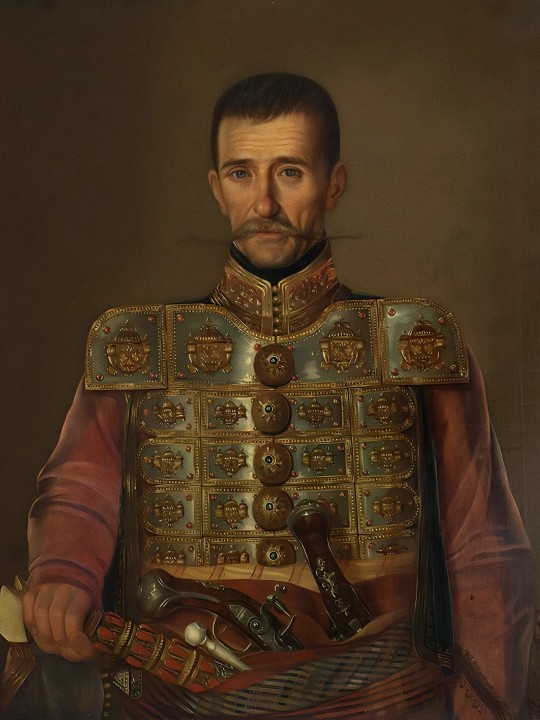
▪️Voivoda Blagoye Zhabarats & Yanko Popovitsh (srb. Војвода Благоје Жабарац и Јанко Поповић)

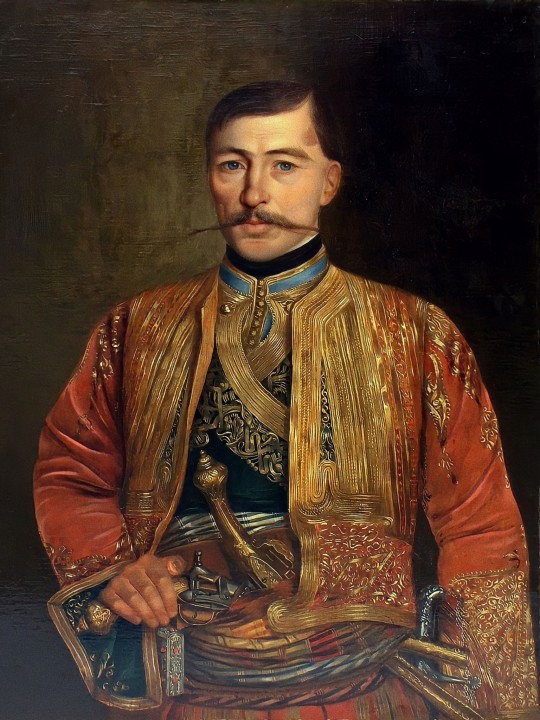
▪️Vasa Charapitsh & Yanitshie Dyuritsh(srb. Васа Чарапић и Јанићије Ђурић)

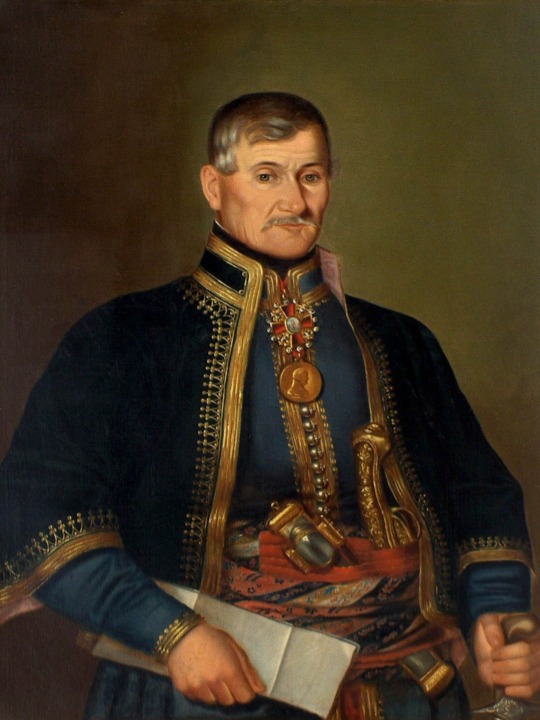
▪️Luka Lazarevitsh & Mladen Milovanovitsh(srb. Лазар Лазаревић и Младен Миловановић)
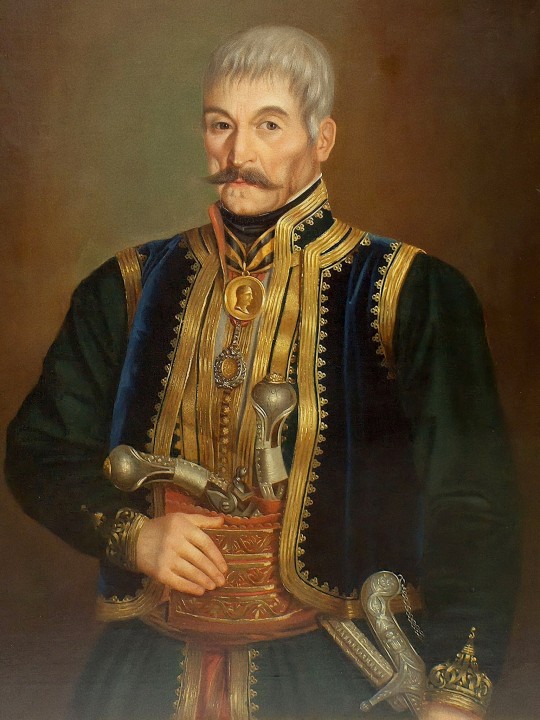

▪️Yakov & Aleksa Nenadovitsh (srb. Јаков и Алекса Ненадовић)
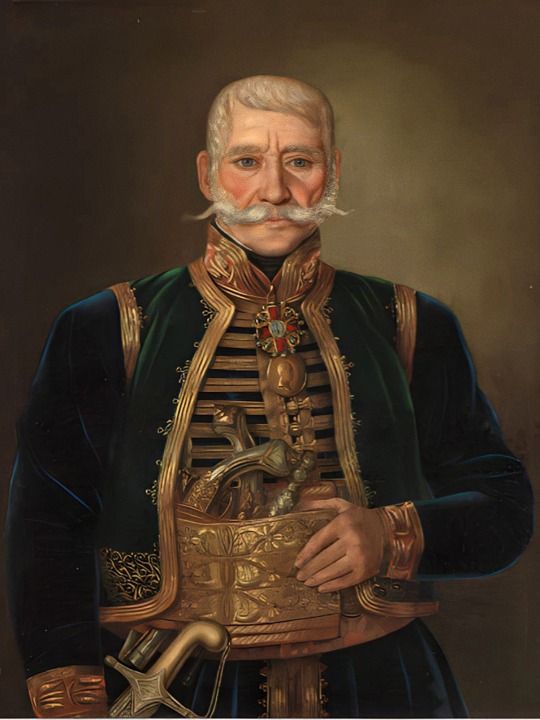

#serbian#balkan#europe#serbian traditional clothes#serbian folklor#Serbian warriors#Voivodas#Serbian revolutionaries#Serbian revolution#18th century#19th century#Dinaric#Phenotype#Vasa Čarapić#Mirko Apostolović#Hajduk Veljko Petrović#Blagoje Žabarac#Janko Popović#Janićije Đurić#Prvi srpski ustanak#1804#South slavs
61 notes
·
View notes
